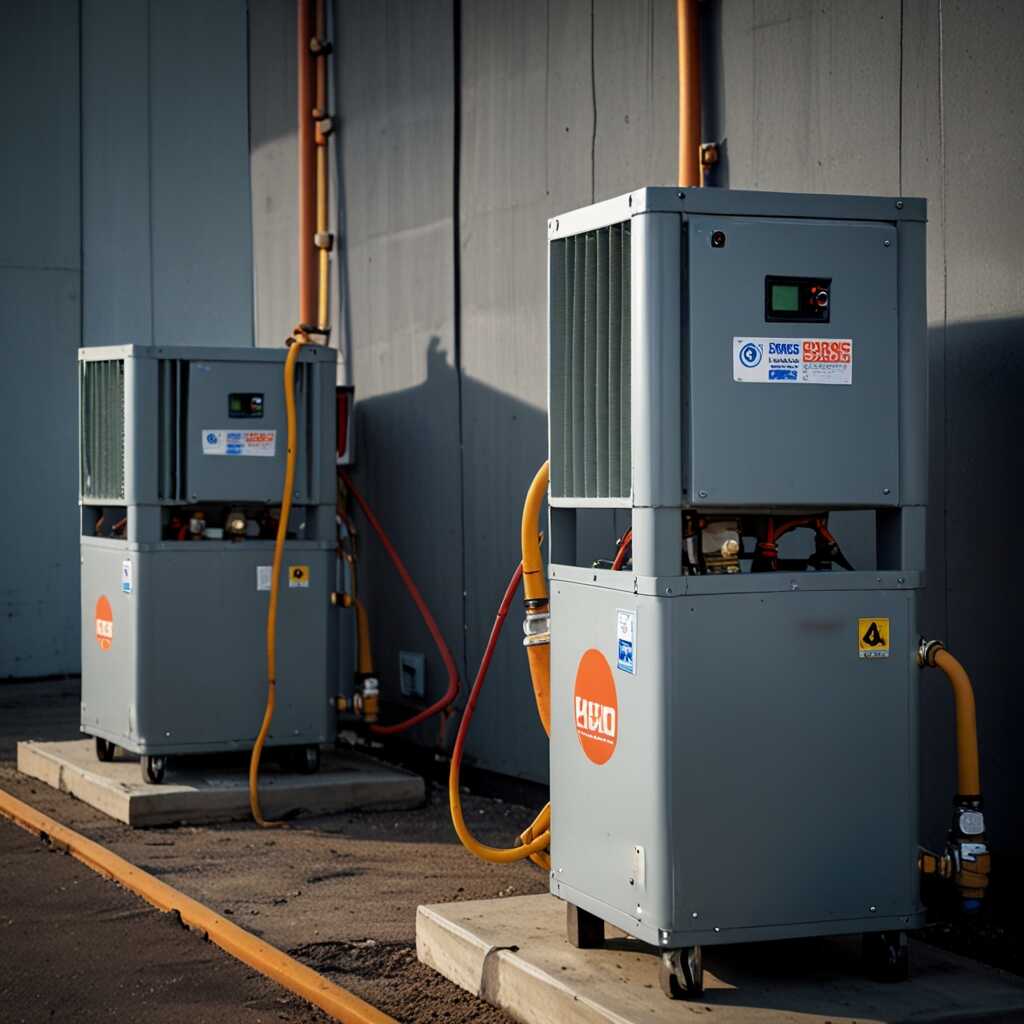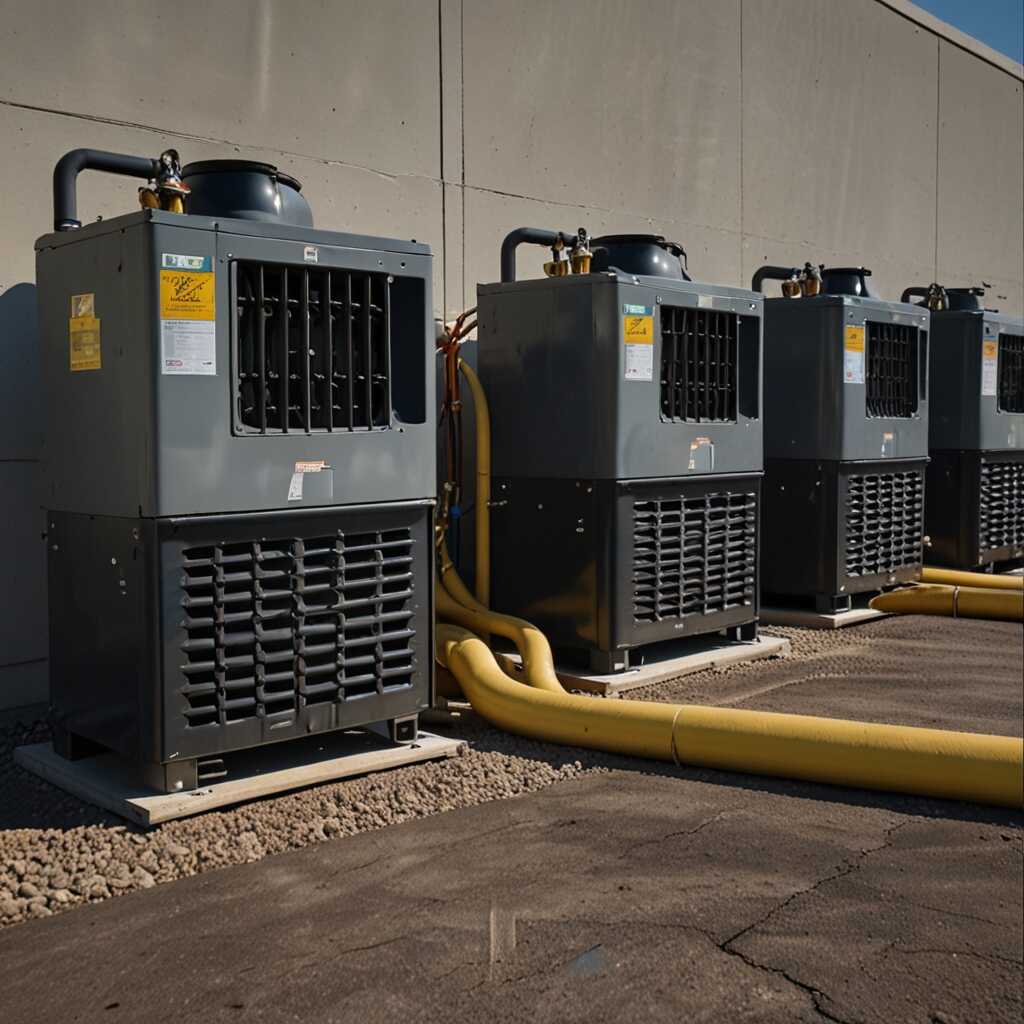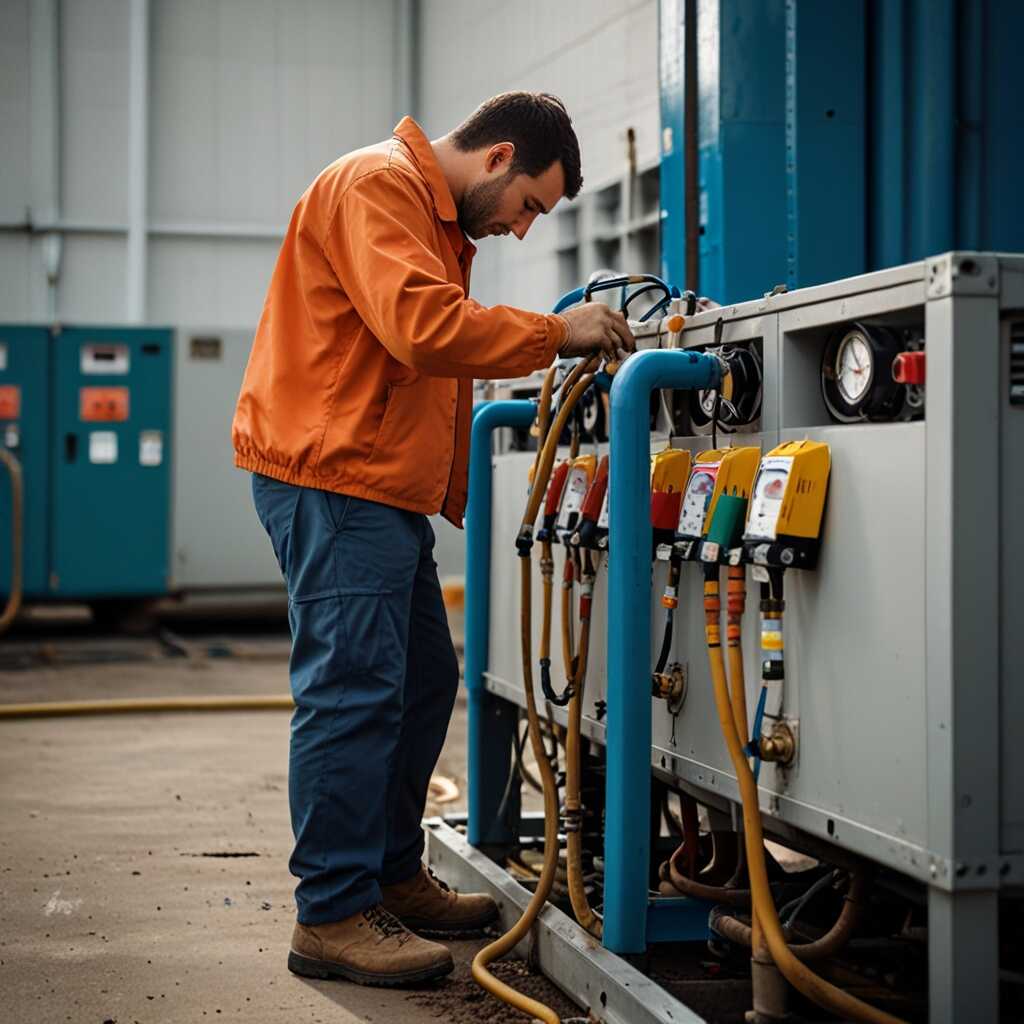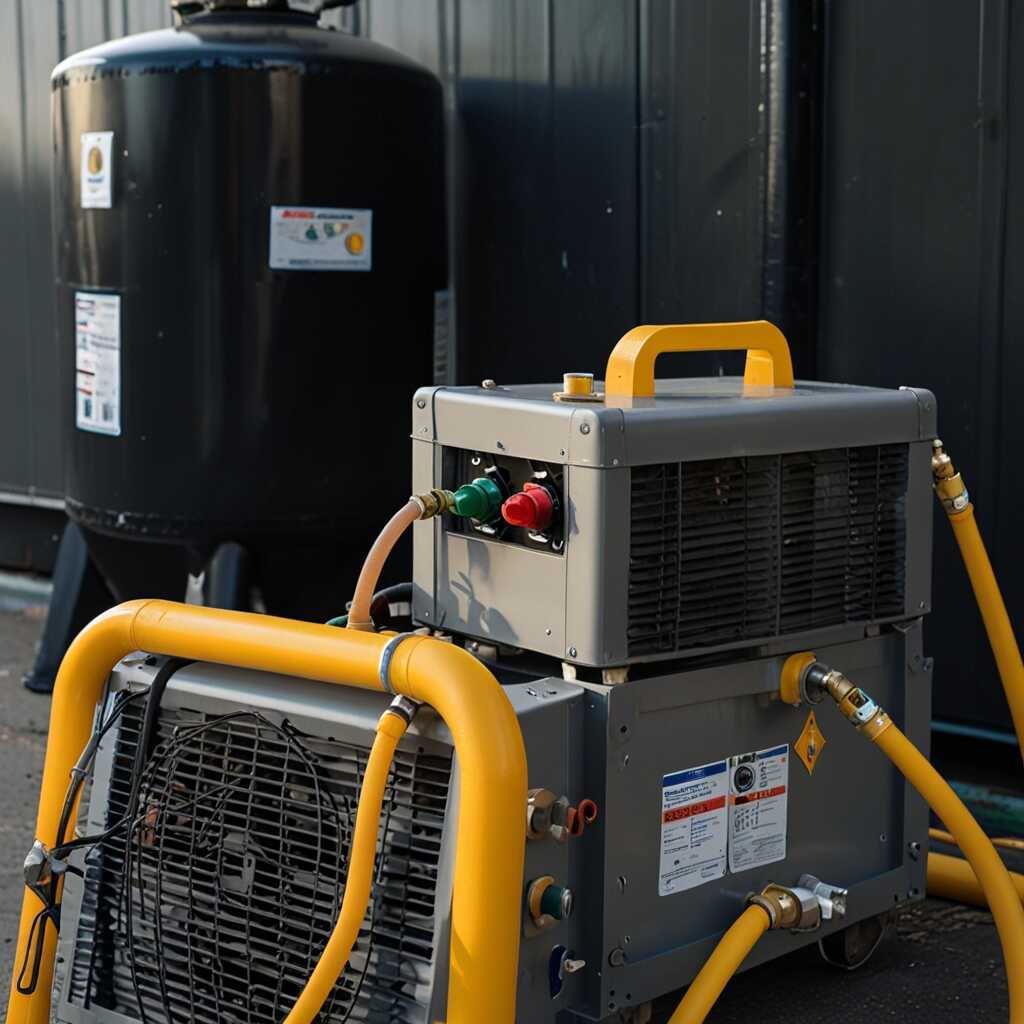The benefits of condensing coil refrigerant recovery machines for faster recovery are profound in HVAC applications. These machines enhance the efficiency and speed of refrigerant extraction, ensuring compliance with environmental regulations. Refrigerant Recovery Pro offers expert guidance on choosing the right condensing coil machines to maximize performance. Our team highlights the importance of swift refrigerant recovery while ensuring adherence to best practices in the HVAC industry.
Overview of Refrigerant Recovery Machines in HVAC Systems
Refrigerant recovery machines play an essential role in HVAC systems. They are designed to extract refrigerant from units safely and effectively. This process ensures compliance with environmental regulations and enhances refrigerant management practices. Users have different machine options, including portable models for on-site recovery and larger machines for extensive installations. Advanced machines can significantly reduce the time needed for recovery processes, achieving completion in as little as 15 to 30 minutes in optimal conditions.
Types of Refrigerant Recovery Machines and Their Benefits
Various refrigerant recovery machines are available in the market, designed to meet specific needs. Portable refrigerant recovery machines offer great mobility, making them ideal for technicians working on-site. They often feature rugged designs, ensuring reliability in diverse environments. High-capacity models handle large volumes of refrigerant, improving efficiency for commercial applications. Many advanced machines include dual refrigerant systems, enabling faster recovery and preventing downtime. Refrigerant Recovery Pro provides expert reviews and comparisons to help users select the best unit for their applications, ensuring optimal performance and compliance with industry standards.
The Role of Condensing Coils in Recovery Machines
Condensing coils play a crucial role in refrigerant recovery machines. They facilitate the rapid condensation of refrigerants back into a liquid state. This process enhances the recovery speed. Condensing coils increase efficiency by reducing the time required for refrigerants to cycle through the machine. Compared to traditional recovery methods, models with condensing coils can deliver proven improvements in overall performance. These coils are designed to manage pressure and temperature effectively, ensuring that refrigerants recover more quickly and reliably.
Benefits of Enhanced Speed in Refrigerant Recovery
Faster refrigerant recovery benefits HVAC professionals significantly. When using condensing coil recovery machines, technicians can reduce downtime during system servicing. This results in lower operational costs and enhanced productivity. Studies show that these machines can often cut recovery times by 30% or more compared to standard units. This speed not only improves workflow but also aligns with environmental compliance goals. By enabling quicker refrigerant recovery, HVAC businesses can ensure better service for customers while also adhering to regulatory standards.

Essential Features to Consider When Choosing Recovery Machines
When selecting refrigerant recovery machines, HVAC professionals should focus on features like recovery efficiency, reliability, and compliance with regulations. Understanding the type of refrigerant commonly used in your applications helps in selecting machines that can handle various refrigerants, including R-410A and R-134A. Always review recovery machine specifications to ensure they meet your operational needs and provide durability. Optimal performance in the field is vital, so consider models that have undergone rigorous testing and provide excellent recovery rates.
Types of Refrigerant Recovery Machines and Their Performance
There are two main types of refrigerant recovery machines: reciprocating and scroll compressors. Reciprocating machines are often more robust and can recover refrigerants faster under varying conditions. Scroll compressors, meanwhile, are designed for quieter operation and can enhance efficiency. When evaluating recovery machines, consider their ability to recover refrigerants quickly, typically around 3 to 12 pounds per minute. Always opt for models that have received good reviews from experts and tested well in real-world applications, ensuring reliability and great performance.
Key Statistics on Refrigerant Recovery Efficiency
- Condensing coil recovery machines can reduce refrigerant recovery time by up to 50% compared to traditional methods.
- These machines can recover refrigerants at a flow rate of 0.8 to 1.5 pounds per minute.
- Using a condensing coil can lower recovery temperatures by up to 20 degrees Fahrenheit.
- Many models feature a 95% recovery efficiency rate, minimizing refrigerant waste.
- Some condensing coil machines can recover pressure from systems up to 500 psi.
- On average, full recovery in HVAC systems takes 30-60 minutes using these machines.
- These machines often have 3-5 years of warranty coverage for added reliability.

Comparative Analysis of Recovery Machine Performance
Comparing recovery machines with and without condensing coils reveals significant differences in refrigerant recovery efficiency. Machines with condensing coils often achieve faster recovery times due to their design, which enhances heat exchange capabilities. Models equipped with advanced features like variable speed compressors can handle a variety of refrigerants, such as R-410A, more effectively than traditional units. Tests show that condensing coils can improve performance in intense environments, leading to quicker recovery rates. Overall, users experience enhanced reliability and efficiency with these modern systems.
Detailed Specifications of Condensing Coil Machines
Condensing coil refrigerant recovery machines come equipped with various specifications that enhance their performance. Many feature intelligent controls that monitor recovery rates and adjust compressor speed, ensuring optimal efficiency. The best models are designed to recover liquids and gases without compromising on recovery speed. Additionally, the durability of condensing coil units often outperforms traditional counterparts, providing HVAC technicians with reliable options for demanding tasks. The quality of components, such as the heat exchangers used, also plays a crucial role in achieving excellent performance metrics during recovery processes.

Typical Uses of Refrigerant Recovery Machines in the HVAC Industry
Refrigerant recovery machines are essential in various HVAC scenarios. They are commonly utilized during system maintenance, repairs, and replacements. In these situations, technicians use them to remove refrigerant safely. This process helps prevent environmental damage and complies with regulations. Additionally, machines with efficiency ratings enhance the speed of refrigerant recovery. HVAC professionals also prefer specific equipment types based on tasks. For example, portable machines are ideal for fieldwork, while stationary units fit shop environments. In a standard HVAC service van, technicians typically carry at least two refrigerant recovery machines for varied operational working environments.
Types of Refrigerant Recovery Machines and Their Applications
Different types of refrigerant recovery machines cater to specific HVAC service applications. Portable units offer flexibility in the field, enabling quick recovery during repairs or installations. Stationary systems provide high-capacity performance for shop-based tasks. Many professional HVAC technicians seek machines that can handle multiple refrigerants. These versatile machines improve operational efficiency. Units with built-in condensing coils deliver faster recovery times. They are designed for heavy use and provide durability. Selecting the right machine depends on the technician’s experience and the requirements of the job at hand.
Advantages for Efficient Refrigerant Removal
- Improves overall system efficiency by quickly removing refrigerants.
- Condensing coil machines ensure compliance with environmental standards.
- Reduces technician labor time due to faster recovery processes.
- Enhances safety by minimizing refrigerant exposure during recovery.
- Offers portability and ease of use for technicians on-site.
- Increases profitability for HVAC businesses through quicker job completions.
- Provides advanced features like automatic shut-off for reliable operation.

Environmental Benefits of Efficient Refrigerant Recovery
Efficient refrigerant recovery machines play a crucial role in environmental protection. They help prevent harmful refrigerants from entering the atmosphere, reducing greenhouse gas emissions. This contributes significantly to sustainability initiatives. Furthermore, these machines ensure regulatory compliance by enabling HVAC professionals to meet stringent environmental regulations. Proper refrigerant management is essential for minimizing leaks and ensuring that all liquid refrigerant is recovered safely. Studies show that advanced recovery machines can recover up to 95% of the refrigerant, making them a reliable choice for efficient operations.
Importance of Regulatory Compliance in Refrigerant Recovery
Regulatory compliance in refrigerant recovery is critical for HVAC professionals. Compliance ensures that technicians adhere to the standards set by the Environmental Protection Agency (EPA) and other regulatory bodies. Advanced recovery machines improve regulatory adherence by offering features that track and report refrigerant use. This data is essential for audits and demonstrates a commitment to environmental protection. Many states require specific recovery percentages, often around 90% for system operations. Using top-quality recovery machines helps HVAC professionals achieve those recovery targets while also supporting overall sustainability efforts.
Key Maintenance Practices for Recovery Machines
Regular maintenance practices enhance the reliability of refrigerant recovery machines. Essential tasks include cleaning filters, inspecting hoses, and verifying the functionality of key components. Users must regularly check the compressor, pressure gauges, and connections for leaks. Proper testing helps in identifying any efficiency issues. Create a routine maintenance schedule for optimal performance, including visual inspections and performance tests. Performance efficiency should be evaluated at least every three months to ensure machines operate smoothly.
Critical Component Maintenance Tips
Maintaining critical components is vital for optimal function in refrigerant recovery machines. Regular inspection of the compressor, which powers the system, enhances reliability. Visual checks help identify wear and tear, such as frays in hoses or loose fittings. Ensure filters are clean to maintain airflow and cooling efficiency. It is advisable to replace worn items promptly. A robust maintenance schedule should also include checking recovery rates and making necessary adjustments to ensure superior performance.
Leading Brands and Their Applications in Refrigerant Recovery
- Carrier offers robust machines, yet they can be pricier, appealing to larger businesses.
- Robinair provides budget-friendly options ideal for small HVAC services but may have lower efficiency.
- Appion has a lightweight design, making it perfect for mobile technicians needing fast recovery.
- Fieldpiece emphasizes ease of use, suitable for rigorous training environments in HVAC schools.
- Yellow Jacket products often boast high performance, attracting established contractors in the industry.
- Some brands cater to residential users, focusing on DIY projects, which enhances market reach.
- Specialized models serve niche markets, like eco-friendly initiatives and emerging regulations compliance.
Emerging Innovations in Refrigerant Recovery Technology
Recent innovations in refrigerant recovery technology focus on improving efficiency and speed. New condensing coil designs enhance performance and reliability. These advanced machines can handle various refrigerants, including new materials. The latest models show significant improvements in energy efficiency. Testing has proven faster recovery rates are possible. Expert reviews highlight essential features that help HVAC professionals streamline processes. A variety of manufacturers are now offering units that integrate these advancements. By 2025, the expected recovery time acceleration could reduce recovery periods by up to 30%.
How Condensing Coils Improve Recovery Machine Efficiency
Condensing coils play a vital role in increasing the efficiency of refrigerant recovery machines. They allow for better heat exchange, leading to faster refrigerant processing. The enhanced design prevents overheating, ensuring reliable performance under pressure. Tests indicate that machines using upgraded coils can extract refrigerant more effectively. This advancement also contributes to energy efficiency improvements, reducing operational costs for HVAC businesses. As of now, these innovations set a new standard for recovery speeds and equipment effectiveness, helping technicians provide excellent service in diverse applications.